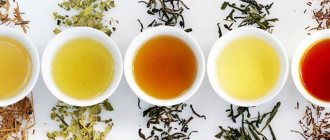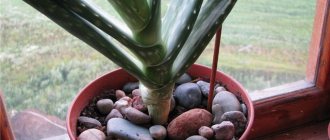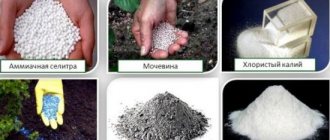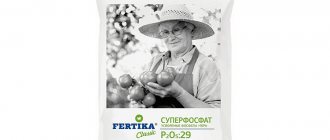House plants can bloom all year round; people admire them much more often than country plants, which they see only on weekends and only in the summer. Indoor flowers live for several years and do not take up much space. It turns out that such green pets have many advantages for their owners. However, many lovers of green spaces in the apartment do not even think about how hard it really is for the flowers themselves. The fact is that they grow in cramped pots, where the area for their nutrition and collection of nutrients is very limited. They constantly lack micronutrients for growth, development and flowering.
And here another injustice appears. Garden, country and garden plants rarely do without fertilizers, and the fact that indoor plants also need fertilizing is often forgotten. Then the stems of home plantings become thinner, weaker, almost lifeless, the leaves fall off, new shoots stop appearing, and there is no strength left to resist pests and diseases.
Often, people begin to think about somehow helping an indoor flower to survive only when it is already on the verge of survival.
Some amateur gardeners try to replant flowers more often in a new, fresh soil substrate, saturated with nutrients. However, this cocktail only lasts for a couple of months, after which a new feeding is needed. And such a frequent change of residence for a plant is fraught with serious consequences. With frequent transplants, they experience great stress, and there is a high probability of damaging the roots.
Therefore, it is much easier and healthier for indoor flowers to feed them without removing them from the pot. Properly selected and balanced fertilizer can increase the splendor and size of leaves, accelerate plant growth, flowering and increase the number of buds.
Observers have even described experiences of literally resurrecting plants from the dead. After they were not replanted in fresh, nutritious soil for about two years and were not given fertilizer, literally after a couple of months the flowers were revived. And the secret of success lies in castor oil.
What is this product?
Castor oil is obtained from a plant called castor bean. The culture itself is extremely poisonous; consumption of its fruits, even in small quantities, can lead to death in humans. But during the production of a castor bean product, all toxins are inactivated, so that the final composition becomes harmless, and sometimes even beneficial.
You will be interested in: Tetrastigma Voinier (indoor grapes): description, rules of care at home
Castor oil is a mixture of triglycerides, linoleic, oleic and ricinoleic acids. The name apparently comes from the word "castoreum", meaning in English beaver stream, which was replaced with the oil in question. The product is also sometimes called ricin oil.
The consistency of the substance is a viscous transparent or yellow liquid. The smell is weak and the taste is unpleasant. The substance freezes at -16 °C and boils at +313 °C. The product does not oxidize in the light, does not dry out, and when burned, disappears without a trace; petroleum products do not dissolve it.
You may be interested in: Howea Forstera: photo and description, home care
When castor oil gets into the soil:
- Accelerates the ripening of buds.
- Activates plant regeneration.
- Acts as an antibacterial agent.
- Accelerates the delivery of nutrients from the soil.
- Helps plant growth.
- Restores lifeless flowers.
- Accelerates the process of cell division.
- Improves soil composition.
How is castor oil obtained?
Castor bean is a garden crop known since ancient times. It contains substances that are toxic to humans, in particular ricin. When treated with hot steam, it is destroyed, which is how castor oil is produced.
Previously, the oil was supplied from Canada. This country was then called the country of beavers, castors, as they are also called. This is where the name “castor oil” comes from. Sometimes it is also called ricin oil.
It is a dense and viscous substance:
- Doesn't dry out.
- Dissolves well in alcohol
- Freezes only at very low temperatures.
- Burns without a trace.
- Does not disintegrate in petroleum products.
The uses of castor oil are very extensive. It is used in medicine, cosmetology, and aviation.
Recipes for use
Feeding flowers with castor oil can be done in several ways. Next, various recipes will be offered.
First option:
- Add a teaspoon of oil to a liter of settled water. It is better to mix in a spray bottle.
- During the fertilization process, the plants are first watered with water to moisten the soil and thus protect the roots from burns.
- Shake the container until the greasy circles disappear.
- Two hours after watering, the shoots and soil are treated with castor oil solution from a container with a sprayer.
Treatments are carried out during the formation of buds and during the active growing season.
Be sure to take into account the characteristics of the plant itself and the slowdown in winter growth.
Advice from flower growers
The following recommendations in the article will help you use castor oil to its maximum benefit:
- the best time to apply castor oil is during budding at any hour;
- root fertilizing will give the maximum beneficial effect and should be carried out;
- Before using the oil solution, be sure to moisten the plant and soil;
- for full growth and development of the crop, it is enough to fertilize every month;
- You cannot store the finished mixture, as it loses all its beneficial properties;
- Before each spraying, the container with the solution and yeast is thoroughly shaken so that the oil particles do not collect into one mass;
- if the crop blooms and dries out only once a year, then fertilizer is applied only once a year;
- In no case should you increase or cancel the frequency of use or dosage, as this most often leads to clogging of the pores of the greens and a deterioration in the process of ricin photosynthesis.
Reference! Negative reviews most often appear due to mistakes by the flower growers themselves, so you should not overdo it with oil.
Second recipe for fertilizer
You can prepare fertilizer with a large amount of nutrients. For this purpose, you should mix castor oil not with water, but with useful solutions. The necessary components are available in every home. For example:
Before fertilizing, it is important to make sure that the plants really need it. You should not fertilize during hibernation, as this can harm the flower.
Aspirin
Plants may emerge from winter in different ways. Somewhat weak and painful . Aspirin can not only help your family with ailments. But also orchids.
Its analgesic anti-inflammatory effect is known. As well as antipyretic :
- Flower growers advise using it to improve the condition of the soil. Its structures. If the soil is infected with a fungus, water with a solution of Aspirin tablets in 1 liter of water;
- It is poorly soluble in water. And imported specimens reduce acidity. And soils, too.
Mode of application
- A soluble Aspirin tablet increases the flowering time of cut plants. This is used by many;
- And also as an antifungal agent. Against the appearance of all kinds of infections and rot ;
- One tablet dissolves in a small amount of water. The solution is brought to 1 liter.
For what purposes is it used in orchid growing?
- Salicylic acid is one of the main components. May help increase productivity. And to improve plant health (immunity). All this helps to resist various insect attacks;
Aspirin helps support the immunity of orchids.
Reviews
Mandatory conditions for the use of castor oil
In order for the fertilizer to be beneficial, you should follow some rules:
- Stir the oil thoroughly in water or other liquid. Otherwise, if a drop of undissolved oil gets on the plant, it will cause a chemical burn.
- It is very important to adhere to the dosage and timing of fertilizing. If the plant blooms, it is fertilized before and after this period. Fertilizing is carried out no more than once a month.
- The prepared solution of castor oil for flowers is used immediately, shaking at the same time.
- Water for preparing fertilizer is taken to stand for a week.
- During the period of suspended animation, no additional feeding is applied.
Vitamins for plants
They are needed for health and proper development not only by people, but also by plants. Using the vitamins in your medicine cabinet, you can make nutritious food for your plants. Vitamins from group B, as well as vitamin C, or simply ascorbic acid, are well suited for these purposes. Just don’t get carried away with watering with “vitamin” water; plants, like people, can develop hypervitaminosis. One watering every 3 weeks will be enough.
Vitamins from group B have a good effect on the plant , speed up metabolism, strengthen roots, and under their influence plants grow and develop better.
Vitamin B1 helps plants survive stressful conditions and also stimulates their growth. For feeding, prepare a solution of 1 ml of vitamin diluted in a liter of water.
Vitamin B3 (or nicotinic acid) is excellent for resuscitating plants. The solution is prepared in the proportion of 1 ml of vitamin per liter of water. You can enhance it with other vitamins, for example B1 or B6.
Vitamin B6 stimulates the immune system of plants and will help save weakened and diseased flowers.
The solution is prepared in the same proportion as vitamin B3.
Vitamin B12 is involved in the production of chlorophyll, activates the growth and metabolism of plants. Use 1 ml of vitamin per liter of water.
Vitamin C (or ascorbic acid) helps plants resist various diseases, just like it does in humans. Vitamin C will also help in the fight against chlorosis.
Ascorbic acid regulates important metabolic processes, affects water metabolism and can even control plant growth. For vitamin watering, dissolve an ascorbic acid tablet in a liter of water.
To feed indoor plants, you can use not only vitamins from the pharmacy, but also other common substances that are used in everyday life for fever and cuts. Even ammonia, which is used for fainting, to bring a person to his senses so that he can go to work caring for house plants .
What to consider when choosing a product?
To purchase high-quality castor oil, you should contact a pharmacy chain. You should not buy the product at unverified retail outlets, since there it may be diluted with aromatic components. Only high quality oil is suitable for fertilizing.
To check the authenticity of castor oil, add a small amount of it to a glass of water. The natural product does not form an oil film on the surface.
The shelf life of castor oil is 2 years. All beneficial properties of the oil are preserved during this period. It must be stored in the refrigerator or other cool place.
When it comes into contact with the skin, castor oil does not cause irritation unless there is an individual intolerance to the substance. However, it is better to wear protective gloves when using it.
Augustine growth biostimulator
The Russian company produces more than 50 certified plant protection products. Augustine's biostimulant is among them. It is recommended to gardeners for orchids :
- Ensures better survival rate of plants during transplantation;
- Stimulates better root formation;
- Flowering will be brighter and longer;
- Develops disease resistance in plants;
- And because of this there are fewer pests.
Description and release form
- The natural preparation has an immunostimulating and anti-stress effect on plants. The main active ingredient is chitosan;
- The package contains 2 tablets of 3 grams each. Dissolves well in water. Without smell;
- The shelf life of the tablets is 2 years. In a closed package;
- The drug is low-toxic and harmless to bees;
- The price differs in different regions. From 29 to 57 rubles.
Mode of application
- Treat roots and cuttings during propagation :
- Dissolve the tablet in 1 liter of warm water. Let it stand for 12 hours;
- By soaking them for 12-20 hours.
- Treatment of vegetative plants;
Augustine is used for lush orchid flowering.
Efficiency
Flower growers speak about the effectiveness of this drug. It also depends on the condition of the plant . The result may have to wait. Perhaps even such treatments need to be carried out more often.
In what phases is it best to use?
- Manufacturers recommend use during the growing season . Important for both roots and leaves;
- After orchids bloom, flower growers advise.
And you can read reviews about Augustine below.
Reviews
I bought Augustine. I only used watering. At first, often - 2 times a week. Then weekly.
After 2 months, an arrow appeared. After another month, buds formed. They bloomed after 2 weeks. The flowers were much larger than when purchased.
The orchid bloomed for almost 4 months. And she threw the arrow away again. And other flowers bloomed. Can be purchased freely at the pharmacy. And inexpensive."
A month has passed. Assessed the condition of the orchids. I don't see any particular effect. One is growing gradually. The second one (after abundant flowering) is in worse condition. There is no talk of any flower stalks. It was more fun with other drugs.”
When should you water flowers with castor oil?
Indoor plants, unlike their garden counterparts, are limited by the size of the pot. And sometimes they lack vital nutrients. In this case, castor oil will come to the aid of the gardener. It can revive a sick or weak plant.
The use of castor oil for flowers is relevant in the following cases:
- if the plant stems break;
- leaves wither for no apparent reason;
- the green part of the flower has drooped;
- plantings do not increase growth;
- after frequent replanting of indoor flowers;
- when the root system is damaged.
If the listed symptoms are observed, the plant will need at least three months to recover. Watering flowers with castor oil can successfully replace the use of the well-known composition "Epin".
Multiflor
Description
What element is your orchid missing? It's not easy to determine :
- Those who offer Multiflor Aqua fertilizer advise not to think about it. If you have their product on hand;
- Liquid complex mineral fertilizer with microelements in chelate form. Suitable for all types of orchids. The presence of a number of microelements emphasizes its versatility for many orchids:
- Iron;
- Cobalt;
- Boron;
- Copper;
- Manganese;
- Molybdenum;
- Zinc;
- Humic acid;
- Succinic acid.
Multiflor is also available in another form . Crystalline. Easy to remember: 50 grams of the drug per 50 liters. Excellent solubility and 100% digestibility by plants. It's even cheaper than liquid.
What is it used for?
You need to use it for :
- Bud formation;
- Increasing the duration of orchid flowering;
- More active root formation;
- Increasing the decorativeness of flowers.
Increases the immunity of plants and their resistance in the event of adverse situations.
Mode of application
How to breed Multiflor?
- The liquid state of the fertilizer and the measuring cap allow you to quickly prepare the required solution :
- Pour 1 liter of settled water into a container;
- Pour in one capful of fertilizer (this is 7.5 ml);
- Stir well;
- Pour into a container (1.5 l plastic bottle). And add water;
- The solution can stand for 30 minutes.
In what phases of development is it most effective?
- It can be used even during the rest period . If your orchid species has it;
- But its greater effect is manifested when buds appear. The number of such buds increases significantly when feeding with Multiflora. And they bloom longer;
- During the growing season , use 1-2 times every 7-10 days. And during the dormant period, 1-2 feedings per month are sufficient;
- After transplanting the plants, fertilizing begins in 7-14 days.
Some people use Multiflor; reviews from amateur gardeners are presented below.
Reviews
Set of substrate components Gardens of Aurica
It is impossible to do without a high-quality substrate when growing many orchids at home. Substratum lat. - base, soil, nutrient medium. Flower growers have their own names - soil mixture, soil.
"Academy of Floriculture" and LLC TD "Auriki Gardens". Very famous organizations not only in Russia. Among flower growers and gardeners.
Products of this production association:
- Ready-made soil mixtures for various plants;
- Substrates and components using coconut (coir);
- Decorative and mulching materials;
- Substrate components for making soil mixtures. Orchid owners are more interested in them.
Beginners in growing these beautiful flowers can find already prepared mixtures . Experienced flower growers are more attracted to components. They already select the desired composition, taking into account the characteristics of their pets. Take into account your conditions and experience.
Description and composition
- The substrates of “Aurica Gardens” are formed on the basis of turf soil. Natural components are added to them :
- Charcoal;
- Sphagnum moss;
- Coconut chips (shaved);
- Pieces of pine bark;
- Needles;
- Peat;
- Vermicompost;
- Their ratio depends on the type of orchid.
For what types is it recommended?
As part of one packaging option, the soil is suitable for the following orchids :











